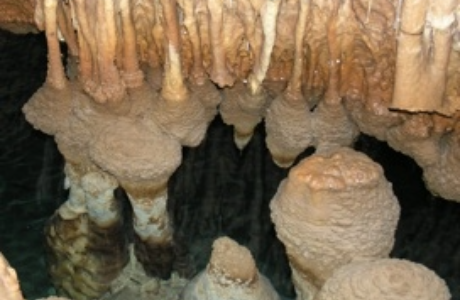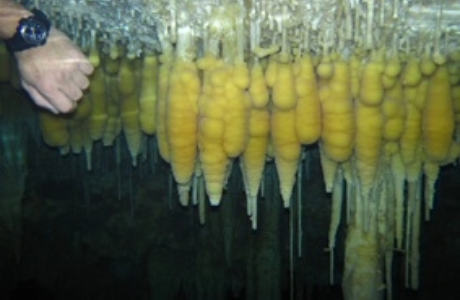Karst Paleo-Research Group
Research
Collaborative Research: P2C2--Constraints on Last Interglacial and Late Holocene Global Mean Sea Level and Fingerprinting Polar Ice Mass Flux from Broadly Distributed Coastal Caves
This project aims to advance the knowledge of global mean sea level (GMSL) and characterize the relative contribution of ice sheets and glaciers to GMSL variations. The researchers will use geological records preserved in cave deposits (i.e., phreatic overgrowth on speleothems; POS) to reconstruct the GMSL history over the last 130.000 years from multiple locations (Mediterranean Sea, Yucatan Peninsula, Philippine Sea), and to study sea-level high stands during past warm climates.
The scientific goals are framed by several core research questions:
- What is the temporal variability of GMSL from the LIG to the Late Holocene and what is the phasing between peak GMSL and the initiation of global scale warming;
- What are the relative contributions of the major polar ice sheets to this variability and is there evidence of hemispheric teleconnections?; and
- to what extent is the GMSL rise and acceleration anomalous relative to the record of GMSL across the Late Holocene? The researchers will develop a near continuous GMSL curve for climate warm intervals derived from high temporally and vertically well resolved POS observations linked to state of the art statistical and geophysical modeling. The observations include U-series chronologies, high-resolution stable isotope analyses of C and O, and mineralogical and petrographical analyses to constrain timing and duration of peak sea-level high stands. Additionally, numerical simulations of glacial isostatic adjustment (GIA) will be used to correct GMSL record from the impact of GIA.
With over one third of the world’s population living within coastline regions, assessing the regional vulnerability to future-sea level rise is of societal relevance and requires an understanding of the magnitude, rate, and drivers of past sea level fluctuations to put current trends in context. This will be achieved by direct sea level estimates provided by coastline mineralogical records, namely phreatic overgrowth on speleothems which form at sea level on partly submerged caves
Phreatic overgrowth on speleothems (POS)
POS are distinct encrustations of calcite or aragonite over existing speleothems (stalactites or stalagmites) and along cave walls (see figures below)

Present-day POS in littoral caves of Mallorca (Photos: B.P. Onac)

Present-day POS in littoral caves of Mallorca (Photos: B.P. Onac)